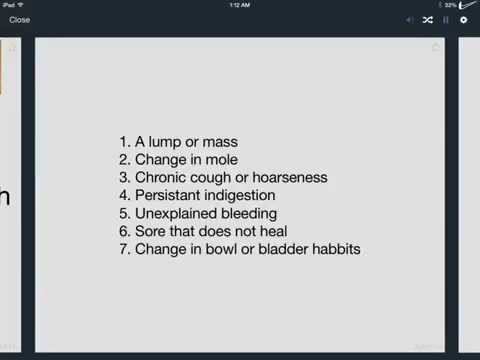Job Opportunities for Medical Assistants
Contents
- Job outlook for medical assistants
- What medical assistants do
- The skills needed to be a medical assistant
- The education and training needed to be a medical assistant
- The certification needed to be a medical assistant
- The salary and benefits of being a medical assistant
- The job responsibilities of a medical assistant
- The working conditions of a medical assistant
- The career path of a medical assistant
- FAQs about medical assistant jobs
There are many job opportunities for medical assistants, and the demand for qualified workers is only expected to grow. If you’re thinking about a career in medical assisting, be sure to check out our blog for the latest information on job opportunities, salary expectations, and more.
Checkout this video:
Job outlook for medical assistants
Medical assistants are in high demand and job prospects are excellent. With the aging baby boomer population and the Affordable Care Act (ACA) expanding access to health care the number of people seeking medical treatment is expected to rise. This means that more medical assistants will be needed to perform routine administrative and clinical tasks in physicians’ offices, hospitals, outpatient clinics, and other healthcare facilities.
The U.S. Bureau of Labor Statistics (BLS) projects that employment of medical assistants will grow 23 percent from 2018 to 2028, much faster than the average for all occupations. In 2018, there were approximately 731,500 medical assistants employed in the United States
What medical assistants do
The job duties of medical assistants vary from office to office, depending on the size and type of the practice. However, there are some common tasks that medical assistants perform on a daily basis. Many of these duties fall into the administrative category, such as answering phones, scheduling appointments, filing insurance forms and handling billing and coding. Other duties are more clinical in nature and may include taking medical histories and recording vital signs, preparing patients for examination, assisting the physician during examination and procedures, performing basic laboratory tests and giving patients injections if so directed by the physician.
The skills needed to be a medical assistant
Medical assistants perform a variety of administrative and clinical tasks to support the work of physicians and other health professionals. They are typically responsible for scheduling appointments, maintaining medical records billing, and assisting with office procedures.
To be successful in this role, medical assistants must have strong interpersonal and communication skills. They must be able to work well under pressure and handle a variety of tasks simultaneously. In addition, they must be detail-oriented and organized. Medical assistants must also have basic computer skills.
The education and training needed to be a medical assistant
Medical assistants are healthcare professionals who perform administrative and clinical tasks in medical offices and clinics. They work closely with doctors, nurses, and other medical staff to provide patient care and support.
Most medical assistants have at least a high school diploma, although some may have completed a postsecondary medical assistant program. Some states require certification for medical assistants, although this is not always necessary.
To be a successful medical assistant, you will need to be able to multitask and be organized. You should also have good communication skills and be able to work well under pressure.
The certification needed to be a medical assistant
The certification needed to be a medical assistant
While not all medical assistants are required to be certified, many employers prefer to hire those who are. There are several different certification options available, each with its own set of requirements. The most common type of certification is the Certified Medical Assistant (CMA) credential, which is offered by the American Association of Medical Assistants (AAMA). To be eligible for the CMA exam, candidates must have completed an accredited medical assisting program and have completed a certain amount of clinical experience.
The salary and benefits of being a medical assistant
Medical assistants are in high demand, and the job outlook is excellent. With the right training, you can begin a career in this growing field. Here’s what you need to know about the salary and benefits of being a medical assistant.
Medical assistants are healthcare professionals who provide administrative and clinical support to physicians and other medical staff. They perform a variety of tasks, including schedule appointments, take medical histories, prepare patients for examinations, answer patient questions, and more. As the healthcare industry continues to grow, so does the demand for qualified medical assistants.
The median salary for medical assistants is $33,610 per year, or $16.17 per hour. The top 10% of earners make more than $43,180 per year, while the bottom 10% earn less than $25,560 per year. The best-paid 25% of medical assistants make $38,670 or more per year, while the lowest-paid 25% earn $29,460 or less per year.
Medical assistants also enjoy a number of benefits and perks. Many employers offer health insurance plans as well as retirement plans such as 401(k)s. Medical assistants may also be eligible for vacation days and sick days. Some employers also offer tuition reimbursement for employees who wish to further their education in the healthcare field.
The job responsibilities of a medical assistant
Medical assistants are responsible for a variety of tasks in a medical office, ranging from patient care to office management duties. They may provide direct patient care, such as taking medical histories and measuring vital signs. They also perform administrative tasks, such as scheduling appointments and handling billing and insurance paperwork.
In larger offices, medical assistants may specialize in one or more areas of responsibility. For example, some medical assistants work primarily with patients, while others may spend more time on clerical tasks. Some medical assistants may also be responsible for training new employees or students.
Medical assistants typically work in physician’s offices, clinics, or hospitals. They may work full time or part time, and their hours will vary depending on the needs of their employer. Many medical assistants work regular business hours, but some may need to work evenings or weekends to accommodate the schedules of their patients.
The working conditions of a medical assistant
Medical assistants work in a variety of settings, including doctor’s offices, hospitals, clinics, and even educational institutions. In some cases, they may be required to travel to different locations to provide care. The hours that a medical assistant works can also vary depending on their place of employment. For example, those who work in doctor’s offices may have regular business hours, while those who work in hospitals may need to be available for shifts that include evenings and weekends.
The duties of a medical assistant are typically divided into two categories: clinical and administrative. Clinical duties include tasks such as taking patient medical histories and vital signs, preparing patients for examination, assisting the physician during examinations, and performing basic laboratory tests. Administrative duties include tasks such as scheduling appointments, maintaining Medical records billing insurance companies, and ordering medical supplies
The career path of a medical assistant
Medical assistants are multi-skilled health professionals specifically trained to work in outpatient facilities such as medical offices and clinics. They perform both clinical and administrative tasks that keep the offices of physicians and other health practitioners running smoothly. The demand for medical assistants is expected to grow much faster than average for all occupations through 2024, according to the U.S. Department of Labor. technicians will be needed to perform routine administrative and clinical tasks, freeing up physicians and other health care providers to see more patients.
Those interested in becoming a medical assistant should have strong interpersonal skills, as they will be working closely with patients, doctors, and other office staff. They should also be detail-oriented and able to juggle multiple tasks at one time. Most medical assistants have at least a high school diploma, although some employers may prefer applicants who have completed a postsecondary education program. Some states require medical assistants to be certified or registered.
FAQs about medical assistant jobs
The following are frequently asked questions about medical assistant jobs:
1. What does a medical assistant do?
2. How much does a medical assistant make?
3. What are the education and training requirements for a medical assistant?
4. What are the job outlook and prospects for medical assistants?
5. Where can I find job openings for medical assistants?







